Thanh mai is a fruit native to China. Some studies have found that thanh mai contains essential micronutrients, including a significant amount of anthocyanins and flavonols, which are believed to have anti-inflammatory and antioxidant properties, benefiting health.
However, this fruit often contains strange insects, so people need to be cautious when consuming and preparing it properly.
The Amazing Benefits of Thanh Mai (Wild Mulberry)
These “little fireballs” have a history of over 3,000 years
Perhaps the most anticipated sweet-sour flavor of summer is thanh mai. Thanh mai, also known as wild mulberry, is an ancient fruit that, when ripe, resembles little “fireballs.”
In many ancient texts, such as the Historical Records, wild thanh mai has existed for over 10,000 years. In China, thanh mai may have begun being used during the Shang Dynasty, around 3,000 years ago. In Vietnam, thanh mai grows abundantly in the central provinces such as Nghe An, Quang Binh, Ha Tinh,…
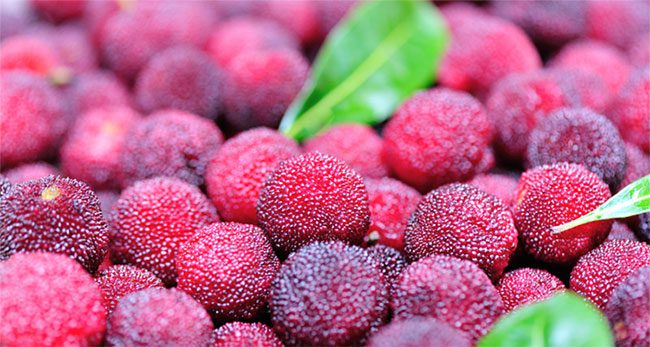
Thanh mai (wild mulberry) has been around for centuries and is good for health.
Thanh mai from Quang Binh is particularly favored for its gentle sweet-sour taste.
The ripening time of thanh mai varies by region and depends on the variety, and timely harvesting can prevent fruit drop. Even on the same thanh mai tree, the fruit ripens in batches; for varieties prone to heavy fruit drop, certain anti-drop chemicals may be applied at appropriate dosages.

Chinese thanh mai and Vietnamese thanh mai differ in size.
This is also one of the reasons why many fruit vendors recommend avoiding Chinese thanh mai. Additionally, the shelf life of thanh mai is very short, lasting only about 2-3 days. If you do not eat it right after purchasing, thanh mai can spoil easily. Although Chinese thanh mai is larger, more beautiful, and juicy, due to long transport times, it may have preservatives, making it less healthy. However, if you travel to these regions and eat it fresh, there is no need to worry about its freshness.
In Vietnam, thanh mai tends to be smaller, with a mild sour taste but fragrant. This is the basic difference that helps you distinguish between the two types of thanh mai in the market. It’s no wonder that women love thanh mai during the season as it offers many health benefits, especially for the skin.
What are the benefits of eating thanh mai?
Rich in antioxidants
Thanh mai is rich in phytochemicals and antioxidants, including vitamins A, C, and E. Additionally, they are low in calories. These antioxidants help protect healthy cells. Moreover, these antioxidants help combat inflammation, which is associated with plaque buildup along arterial walls, while also providing better cardiovascular protection.
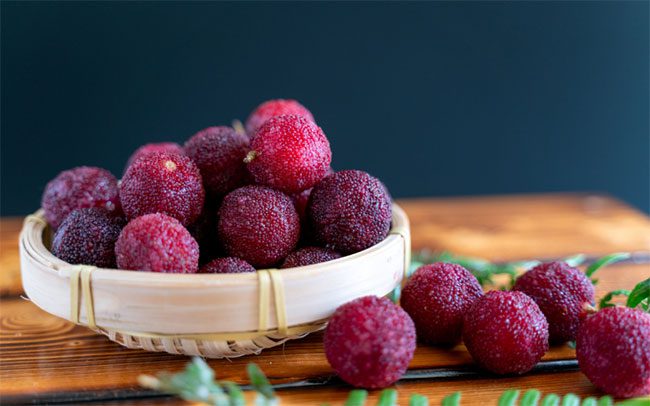
Thanh mai is rich in phytochemicals and antioxidants.
Thanh mai contains many antioxidants, including anthocyanins, a type of antioxidant that gives the fruit its deep red color. Studies have shown that anthocyanins can help reduce inflammation, improve cognitive function, and lower the risk of chronic diseases.
In particular, besides anthocyanins, thanh mai is also very rich in oligomeric proanthocyanidins (OPC), the most powerful type of antioxidant that eliminates free radicals. OPC is believed to support all metabolic systems in the body by protecting it from internal and environmental stresses.
Twenty times stronger than Vitamin C and fifty times stronger than Vitamin E, OPC is believed to combat cardiovascular diseases, degeneration, and premature aging. OPC has also been shown to enhance the immune system, lower blood pressure, and help reduce LDL cholesterol levels while increasing the strength and elasticity of blood vessels, slowing down collagen breakdown, keeping the skin firm, and inhibiting cancer cell growth.
Provides folate
According to Weekand, one thanh mai contains 3.4 micrograms of folate, or 54 micrograms in a 100-calorie serving. Folate is essential for DNA formation and is particularly important for women of childbearing age, helping to prevent birth defects.
Protects and brightens the skin
The nutrient that gives the deep red color to thanh mai, cyanidin-3-glucoside, may have anti-cancer properties, particularly against skin cancer. Additionally, the antioxidants help protect the skin, providing nutrients that make the skin smooth, bright, and healthy.
Good for digestion
Thanh mai is a good source of fiber, containing both soluble and insoluble fiber.
Fiber is crucial for maintaining digestive health and preventing constipation. Furthermore, fiber also helps regulate blood sugar levels and can reduce cholesterol levels.
Anti-inflammatory
Inflammation is a natural response of the body to injury or infection, but chronic inflammation can contribute to the development of many diseases, including arthritis, diabetes, and cancer.
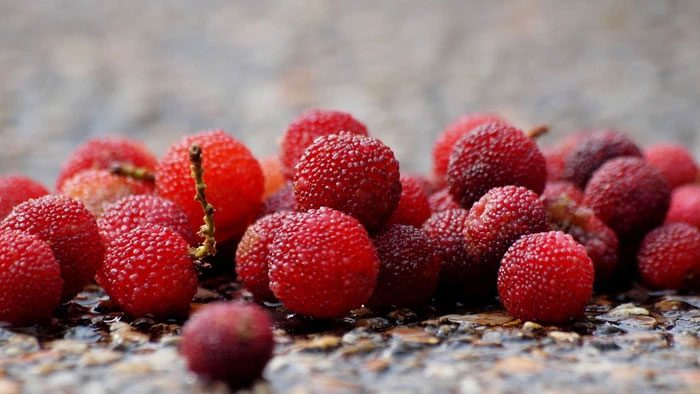
Thanh mai contains compounds proven to reduce inflammation in the body, which may help prevent the development of chronic diseases.
How to incorporate thanh mai into your diet
Thanh mai can be incorporated in various ways:
- One of the most popular ways to enjoy thanh mai is to eat it fresh. You can use it as a snack or add it to fruit salads to enhance flavor.
- The second popular way is to make jam or jelly. The high pectin content of this fruit makes it a great choice for making jams and jellies that set well. People can use thanh mai jam to spread on bread.
- Not only used in dishes, thanh mai can be prepared as a drink. You can make smoothies or thanh mai juice.
Overall, depending on the culinary style of each region, you can prepare various dishes.
Guide to selecting and cleaning thanh mai properly
Tips for buying delicious thanh mai
When buying thanh mai, pay attention to the color of the fruit. It is best to choose those with a deep red or purplish hue. Thanh mai with such colors are ripe and fresh. If they are light red or black, it is advisable not to buy them. The light red ones are not fully ripe, while the black ones are overripe and prone to spoilage.
The surface of thanh mai is covered with a layer of “fruit spines,” and its shape will indicate the ripeness of the fruit. You should choose fruits with relatively round spines, as these tend to be sweeter and juicier. Fruits with sharp spines will be more sour.
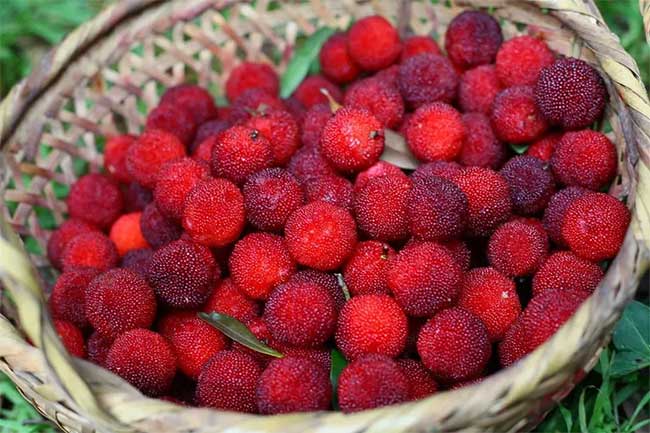
The surface of thanh mai is covered with a layer of “fruit spines.”
Next, hold the thanh mai in your hand to feel its moisture. It is best to choose fruits that feel dry and non-sticky. If they feel wet, the seller may have sprayed water to keep them fresh, or they may be overly ripe, causing juice to leak out, which can lead to bacterial contamination.
How to wash thanh mai correctly?
Should you wash thanh mai before eating it? This is a question that generates much debate. Some information suggests that thanh mai contains fruit fly larvae, but in reality, they do not harm the human body.
In fact, thanh mai does not have a skin like other fruits, making it easy for fruit flies to lay eggs in it. Furthermore, thanh mai contains natural sugars, which are very conducive to the development of fruit fly larvae.
They develop within the fruit from a young age; even so, they do not carry pathogens. This is because fruit fly larvae cannot parasitize in the human body and will be digested directly by gastric juices, turning into protein for the human body to absorb.
However, before eating thanh mai, it is still necessary to soak and wash it thoroughly. During transport and packaging, thanh mai can become dirty.
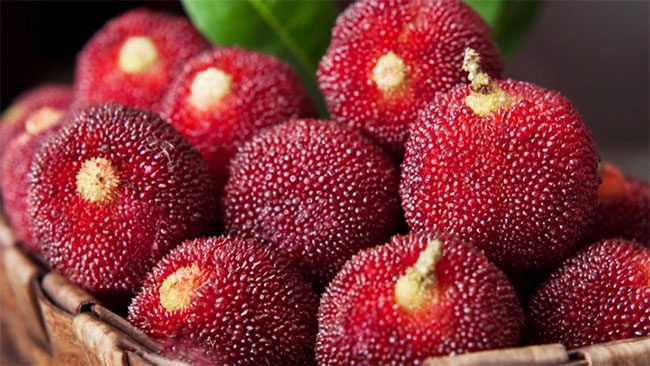
Before eating thanh mai, it is still necessary to soak and wash it thoroughly.
When washing sweet apricots, you need to pay attention to the following points:
When you buy sweet apricots, some of the fruits may still have stems attached. You should not pull the stems off to wash them. Instead, simply cut the stems short. If you pull the stems directly, the flesh will peel off, and washing will cause the fruits to absorb water, resulting in a bland taste and diminished flavor.
If the sweet apricots still have long stems, it is advisable to cut them short before washing, rather than pulling the stems out straight.
Add water to a bowl, then add a tablespoon of salt and stir well. Gently place the sweet apricots into the bowl and soak them for about 5 minutes. The saltwater will help remove impurities and larvae. As a result, the sweetness of the sweet apricots will become more pronounced.
Next, place the sweet apricots into another bowl of water mixed with baking soda and flour (or cornstarch) for 5 minutes. This will help eliminate bacteria and dirt completely. Remove them and let them drain before enjoying.




















































